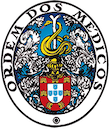Diagnóstico e tratamento do nódulo solitário da tiróide: estudo de avaliação em Portugal
DOI:
https://doi.org/10.20344/amp.4697Resumo
Introdução – A melhor estratégia diagnóstica e terapêutica em relação à abordagem da doença nodular da tiroideia, continua a ser um assunto controverso. Objectivos – Este estudo teve como objectivo caracterizar a prática médica, relativamente ao diagnóstico e tratamento da patologia nodular da tiroideia, de endocrinologistas e cirurgiões, em Portugal, em 2002. Métodos – Foi elaborado um questionário baseado no já utilizado pela European Thyroid Association e pela American Thyroid Association. Este questionário foi distribuído pela Sociedade Portuguesa de Endocrinologia, a médicos endocrinologistas e cirurgiões, tendo em conta um caso clínico bem definido, de uma mulher de 42 anos com nódulo solitário da tiróide com 2 x 3 cm, sem história de disfunção ou sintomas dolorosos. Cada médico deveria responder quais os procedimentos diagnósticos e terapêuticos que adoptaria no caso em referência. Onze variações ao caso inicial foram propostas de forma a avaliar as alterações efectuadas para cada alteração introduzida. Resultados – Foram enviados 1492 questionários, 163 a médicos endocrinologistas e 1329 a cirurgiões, tendo-se recebido um total de 104 respostas. A taxa de respostas global foi de 7%. A taxa de respostas dos endocrinologistas foi de 27% e dos cirurgiões de 4,5%. Dos 104 questionários recebidos, 42% provinham de endocrinologistas e 58% de cirurgiões. Em relação aos exames analíticos pedidos, os cirurgiões utilizaram mais analises do que os endocrinologistas para o caso clínico em estudo. As principais diferenças em termos laboratoriais consistiram num maior número de pedidos de T4 e T3 totais e tiroglobulina pelos cirurgiões, e mais pedidos de AATPO pelos endocrinologistas. O número médio de análises foi de 4,6, sendo de 4,1 para os endocrinologistas e 5,1 para os cirurgiões. Quanto à imagiologia e citologia, 32% dos médicos inquiridos advogaram uma cintigrafia para o estudo do caso clínico, não se registando diferenças significativas entre endocrinologistas e cirurgiões. A ecografia foi utilizada por mais de 85% dos inquiridos. 90% pediram uma citologia, dos quais 83% orientada por palpação e 18% eco-guiada. Em relação ao tratamento, 33% dos médicos preconizaram tratamento com levotiroxina, sendo a cirurgia proposta por 16,3% dos endocrinologistas e 36,6% dos cirurgiões. No entanto, a maioria dos médicos (68%) optaria por não efectuar qualquer tratamento mantendo apenas a doente em vigilância. Conclusões – Existem diferenças importantes na forma de abordagem da doença nodular tiroideia, entre os vários médicos e os vários especialistas, sublinhando-se a dificuldade existente em atingir um consenso diagnóstico e terapêutico.
Downloads
Downloads
Publicado
Como Citar
Edição
Secção
Licença
Todos os artigos publicados na AMP são de acesso aberto e cumprem os requisitos das agências de financiamento ou instituições académicas. Relativamente à utilização por terceiros a AMP rege-se pelos termos da licença Creative Commons ‘Atribuição – Uso Não-Comercial – (CC-BY-NC)’.
É da responsabilidade do autor obter permissão para reproduzir figuras, tabelas, etc., de outras publicações. Após a aceitação de um artigo, os autores serão convidados a preencher uma “Declaração de Responsabilidade Autoral e Partilha de Direitos de Autor “(http://www.actamedicaportuguesa.com/info/AMP-NormasPublicacao.pdf) e a “Declaração de Potenciais Conflitos de Interesse” (http://www.icmje.org/conflicts-of-interest) do ICMJE. Será enviado um e-mail ao autor correspondente, confirmando a receção do manuscrito.
Após a publicação, os autores ficam autorizados a disponibilizar os seus artigos em repositórios das suas instituições de origem, desde que mencionem sempre onde foram publicados e de acordo com a licença Creative Commons








